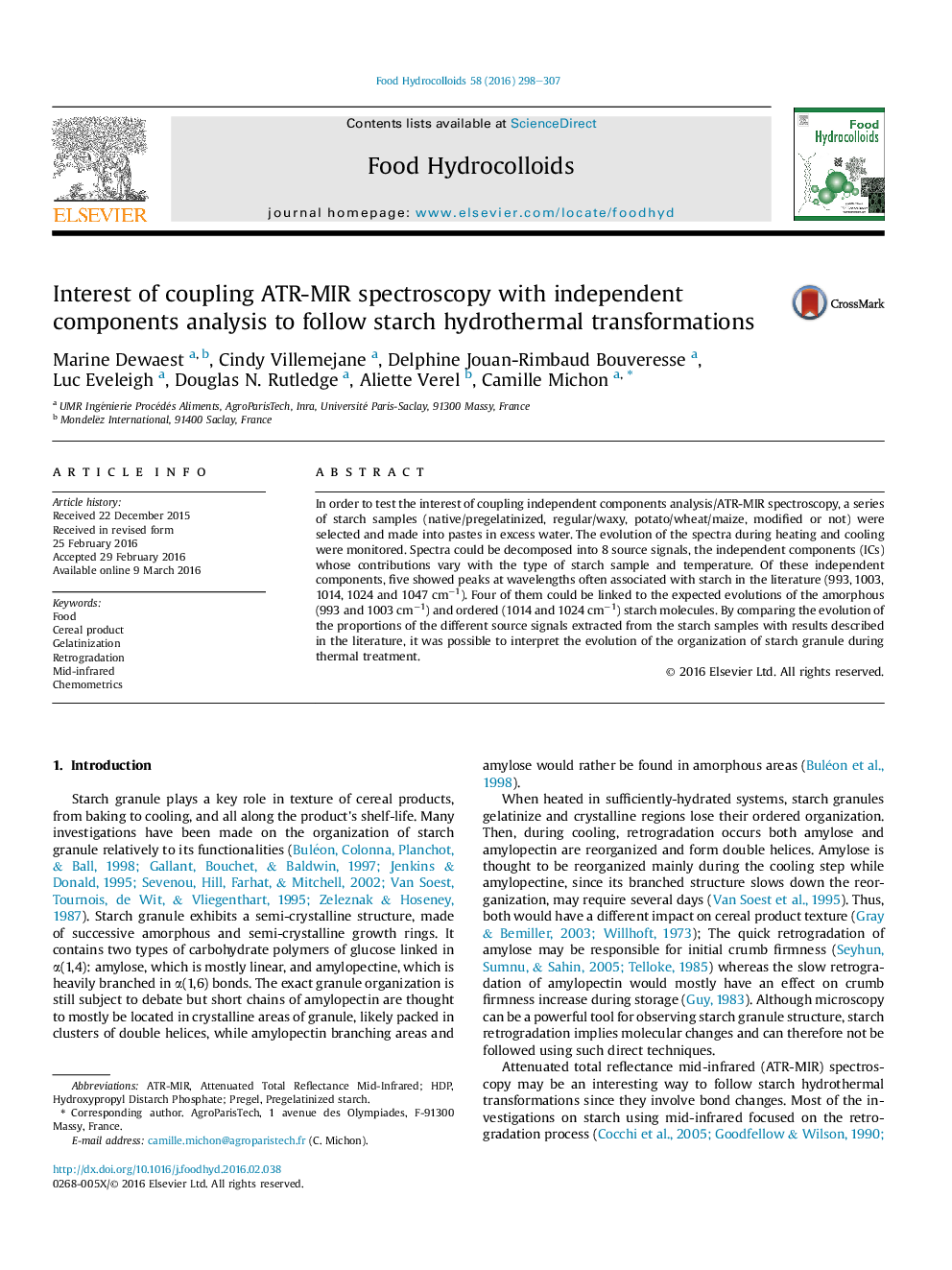| Article ID | Journal | Published Year | Pages | File Type |
|---|---|---|---|---|
| 603720 | Food Hydrocolloids | 2016 | 10 Pages |
•Amylose and amylopectin supramolecular organisation was studied by ATR-MIR spectroscopy.•ATR-MIR spectroscopy results were analyzed using a chemometric method.•Independent Components Analysis simplified the interpretation of the ATR-MIR spectra.•Crystals and bound water were followed versus increasing and then decreasing temperature.
In order to test the interest of coupling independent components analysis/ATR-MIR spectroscopy, a series of starch samples (native/pregelatinized, regular/waxy, potato/wheat/maize, modified or not) were selected and made into pastes in excess water. The evolution of the spectra during heating and cooling were monitored. Spectra could be decomposed into 8 source signals, the independent components (ICs) whose contributions vary with the type of starch sample and temperature. Of these independent components, five showed peaks at wavelengths often associated with starch in the literature (993, 1003, 1014, 1024 and 1047 cm−1). Four of them could be linked to the expected evolutions of the amorphous (993 and 1003 cm−1) and ordered (1014 and 1024 cm−1) starch molecules. By comparing the evolution of the proportions of the different source signals extracted from the starch samples with results described in the literature, it was possible to interpret the evolution of the organization of starch granule during thermal treatment.
Graphical abstractFigure optionsDownload full-size imageDownload as PowerPoint slide
